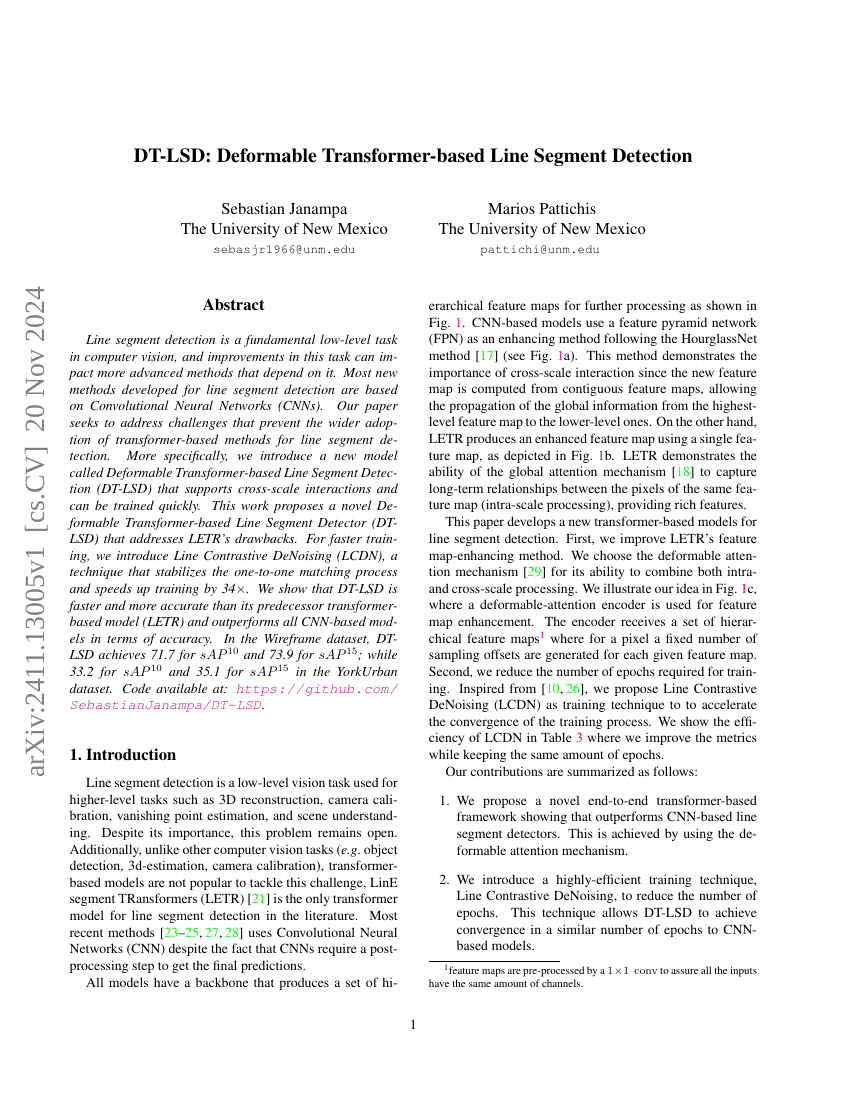Command Palette
Search for a command to run...
Janampa Sebastian ; Pattichis Marios

Abstract
Line segment detection is a fundamental low-level task in computer vision,and improvements in this task can impact more advanced methods that depend onit. Most new methods developed for line segment detection are based onConvolutional Neural Networks (CNNs). Our paper seeks to address challengesthat prevent the wider adoption of transformer-based methods for line segmentdetection. More specifically, we introduce a new model called DeformableTransformer-based Line Segment Detection (DT-LSD) that supports cross-scaleinteractions and can be trained quickly. This work proposes a novel DeformableTransformer-based Line Segment Detector (DT-LSD) that addresses LETR'sdrawbacks. For faster training, we introduce Line Contrastive DeNoising (LCDN),a technique that stabilizes the one-to-one matching process and speeds uptraining by 34$\times$. We show that DT-LSD is faster and more accurate thanits predecessor transformer-based model (LETR) and outperforms all CNN-basedmodels in terms of accuracy. In the Wireframe dataset, DT-LSD achieves 71.7 for$sAP^{10}$ and 73.9 for $sAP^{15}$; while 33.2 for $sAP^{10}$ and 35.1 for$sAP^{15}$ in the YorkUrban dataset.
Code Repositories
Benchmarks
| Benchmark | Methodology | Metrics |
|---|---|---|
| line-segment-detection-on-york-urban-dataset | DT-LSD | sAP10: 33.2 sAP15: 35.1 sAP5: 30.2 |
Build AI with AI
From idea to launch — accelerate your AI development with free AI co-coding, out-of-the-box environment and best price of GPUs.